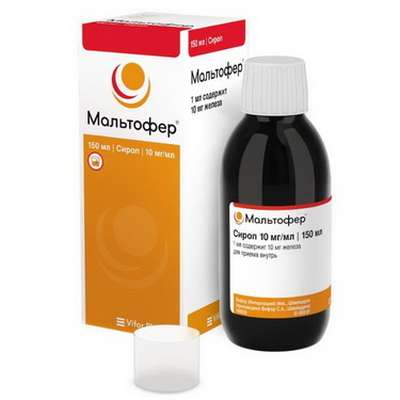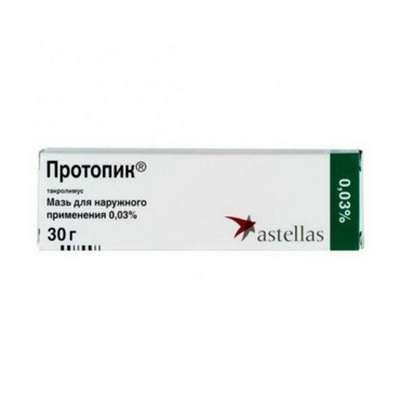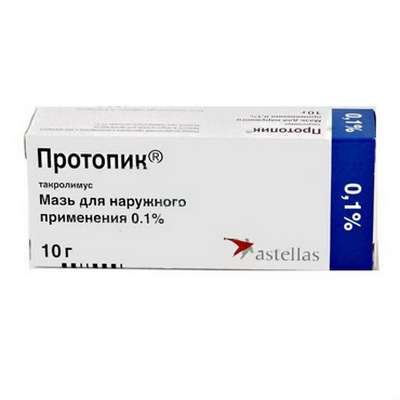Instruction for use: Diclofenac-Akri retard
I want this, give me price
Active substance Diclofenac
ATX Code M01AB05 Diclofenac
Pharmacological group
NSAIDs - Acetic acid derivatives and related compounds
Nosological classification (ICD-10)
G43 Migraine
The pain of migraine, Migraine, hemiplegic migraine, Migraine headache, A migraine attack, Continuous headache, hemicranias
H60 Otitis externa
Infections of ENT organs, Infections of the external auditory canal, Infectious-inflammatory diseases of the ear, Acute catarrhal inflammation of the external auditory canal, Infections of the external ear
J02.9 Acute pharyngitis, unspecified
purulent pharyngitis, Acute nasopharyngitis,Limfonodulyarny pharyngitis
J03.9 Acute tonsillitis, unspecified (angina agranulocytic)
Sore throat infections, Acute tonsillitis, Angina, Follicular tonsillitis, Angina alimentary-hemorrhagic, Secondary sore throat, Sore throat primary, Angina follicular, Angina, Inflammatory diseases of the tonsils, Catarrhal angina, Lacunar angina, Acute Sore Throat, Tonsillitis, Tonsillitis acute, Tonsillar angina, Follicular sore throat, Bacterial tonsillitis
M06.9 Other specified rheumatoid arthritis
Rheumatoid arthritis,Pain syndrome in rheumatic diseases, Pain in rheumatoid arthritis, Inflammation in rheumatoid arthritis, Degenerative forms of rheumatoid arthritis, Children's rheumatoid arthritis, Exacerbation of rheumatoid arthritis, Acute articular rheumatism, Rheumatic arthritis, Rheumatic polyarthritis, Rheumatoid arthritis, Rheumatic polyarthritis, Rheumatoid arthritis, Rheumatoid arthritis of active course, Rheumatoid arthritis, Rheumatoid polyarthritis, Acute rheumatoid arthritis, Acute rheumatism
M07.3 Other psoriatic arthropathies (L40.5 +)
Arthritis psoriatic, The generalized form of psoriatic arthritis, Psoriatic arthritis
M08 Juvenile [juvenile] Arthritis
Juvenile arthritis, Juvenile chronic polyarthritis, Juvenile chronic arthritis, Juvenile rheumatoid arthritis, Arthritis juvenile chronic
M10 Gout
Exacerbation of gout, Acute articular attack with gout, Acute gouty attack, Gouty attack, Recurrent gout attacks, Chronic gout
M13.9 Arthritis, unspecified
Arthritis,Purulent arthritis (non-infectious), acute Arthritis,Pain in acute inflammatory diseases of the musculoskeletal system,Pain in chronic inflammatory diseases of the musculoskeletal system,The pain in osteoarthritis, Inflammation in osteoarthritis, Inflammatory arthropathy, Inflammatory and degenerative joint diseases, Inflammatory disease of the musculoskeletal system, Inflammatory joint disease, Inflammatory diseases of the musculoskeletal system, destructive arthritis, The disease of the musculoskeletal system, Diseases of the musculoskeletal system, Diseases of the musculoskeletal system and connective tissue, Infections musculoskeletal system, monoartrit, Non-infectious arthritis, rheumatic arthritis, Osteoarthritis, Acute inflammation of the musculoskeletal tissue, Acute inflammatory diseases of the musculoskeletal system, Acute inflammatory condition of the musculoskeletal system, Acute arthritis, Acute osteoarthritis, Post-traumatic osteoarthritis, Reactive arthritis, Chronic inflammatory diseases of the joints, Chronic arthritis, Chronic inflammatory arthritis, Chronic inflammation of the inner layer of the joint capsule, Chronic inflammation of the joint capsule,Chronic inflammatory disease of the joints, Exudative arthritis
M15-M19 Osteoarthritis
M42 Osteochondrosis
Pain in spinal osteochondrosis, Cervical osteochondrosis, Radicular syndrome in osteochondrosis, intervertebral osteochondrosis, osteochondrosis, Osteochondrosis with radicular syndrome, Osteocondritis of the spine
M45 Ankylosing spondylitis
Ankylosing spondylarthrosis, Marie-Strumpel disease, Ankylosing spondylitis, Pain syndrome in acute inflammatory diseases of the musculoskeletal system, Pain syndrome in chronic inflammatory diseases of the musculoskeletal system, Bechterew's disease, Ankylosing spondylitis, Diseases of the spinal column, Rheumatic spondylitis, Bechterew-Marie-Strumpel disease
M54.3 Sciatica
Ishialgia, Neuralgia of the sciatic nerve, Sciatic neuritis
M54.4 Lumbago with sciatica
Pain in the lumbosacral spine, Lumbago, Sciatica, Lumbar syndrome
M65 Synovitis and tendosynovitis
Acute tenosynovitis, Tendovaginitis (tenovaginitis), Tendosinovit (tenosynovitis), Tendovaginitis, Osteoarthritis in musculo-articular diseases, Inflammatory disease of soft tissues, Nonspecific tenosynovitis, Tendosinovit
M71 Other bursopathies
Bursitis, Bursopathy, Diseases of soft tissues, Osteoarthritis in musculo-articular diseases, Inflammatory disease of soft tissues, Subacute bursitis
M79.1 Myalgia
Myofascial pain syndromes ,Pain syndrome in musculo-articular diseases, Pain syndrome in chronic inflammatory diseases of the musculoskeletal system, Pain in the muscles, Tenderness of muscles, Muscular soreness in severe physical exertion, Painful conditions of the musculoskeletal system, Pain in the musculoskeletal system, Pain in the muscles, Pain at rest, Muscle aches, Muscle pain, Musculoskeletal pain, Myalgia, Muscle pain, Muscle pain at rest, Muscle pain, Muscular pain of non-rheumatic origin, Muscle pain of rheumatic origin, Acute muscle pain, Rheumatic pain, Rheumatic pains, Myofascial syndrome, Fibromyalgia
M79.2 Neurology and neuritis, unspecified
Pain syndrome with neuralgia, Brachialgia, Occipital and intercostal neuralgia, Neuralgia, Neuralgic pain, Neuralgia, Neuralgia of intercostal nerves,Neuralgia of the posterior tibial nerve, Neuritis, Neuritis traumatic, Neuritis, Neurological Pain Syndromes, Neurological contractures with spasms, Acute neuritis, Peripheral neuritis,Post-traumatic neuralgia,Severe pain of a neurogenic nature, Chronic neuritis, Essential neuralgia
N23 Renal colic unspecified
Pain in renal colic, Pain smooth muscle spasm, Pain spasm of smooth muscles (renal and biliary colic, intestinal spasms, dysmenorrhea), Pain spasm of smooth muscles of internal organs, Pain spasm of smooth muscles of internal organs (kidney and biliary colic, intestinal spasms, dysmenorrhea), renal Colic, ureteral colic, Renal colic, Renal colic with urolithiasis, Kidney disease, Spasm of smooth muscle in diseases of the urinary system, The spasm of the urinary tract, The spasm of the ureter, The spasm of the ureters, Spasms of the urinary tract, Spasms of the urinary tract
N94.4 Primary dysmenorrhea
Primary functional dysmenorrhea, Pain in primary dysmenorrhea, Primary algodismenorea, Menstrual cramps
R50 Fever of unknown origin
Malignant hyperthermia, Hyperthermia malignant
R52.0 Acute pain
Acute pain syndrome, Acute pain syndrome with osteoarthritis, Acute pain syndrome of traumatic origin, Severe pain of a neurogenic nature, Severe pain, Pain syndrome at delivery
Composition and form of release
1 tablet retard coated, contains diclofenac sodium 100 mg; in a contour acheive box 10 pcs., in a cardboard bundle 2 packs.
pharmachologic effect
Pharmacological action - anti-inflammatory, antipyretic, antiaggregational, analgesic.
It inhibits cyclooxygenase, breaks the metabolism of arachidonic acid, reduces the amount of PG (prostaglandins) both in the inflammation focus and in healthy tissues, suppresses the exudative and proliferative phases of inflammation.
Pharmacokinetics
After intake, quickly and completely absorbed (food slows the rate of absorption). As a result of sustained release of the active substance after taking in a dose of 100 mg Cmax - 0.5-1 μg / ml is achieved after 5 hours. The concentration in the plasma depends linearly on the amount of the administered dose. Bioavailability - 50%. The connection with plasma proteins, mainly with albumins, is 95-98%. It penetrates into the synovial fluid, where its concentration increases more slowly, but reaches 4-6 hours higher than in plasma and remains at this level for 12 hours. 50% of the administered dose is subjected to the effect of the first passage through the liver. Metabolized by single or multiple hydroxylation and conjugation with glucuronic acid to form pharmacologically less active metabolites than diclofenac. The system Cl is 260 ml / min. It is excreted through the kidneys (60% of the administered dose), less than 1% - unchanged, the rest - in the form of metabolites with bile. When observing the recommended interval between doses, it does not cumulate. If the renal function is impaired, the excretion of metabolites with bile increases, and their concentration in the blood is not observed.
Indications
Inflammatory diseases of the musculoskeletal system (rheumatoid, psoriatic, juvenile and chronic arthritis, ankylosing spondylitis, chronic and acute gouty arthritis); degenerative diseases of the musculoskeletal system (deforming osteoarthritis, osteochondrosis); lumbago, sciatica, neuralgia, myalgia; diseases of the periarticular tissues (tendovaginitis, bursitis); post-traumatic pain syndrome, accompanied by inflammation; postoperative pain, migraine, renal colic, primary algodismenorea, adnexitis, proctitis; infectious diseases of ENT organs with severe pain syndrome (pharyngitis, tonsillitis, otitis), residual pneumonia; febrile syndrome.
Contraindications
Hypersensitivity (including to other NSAIDs), ulcerative-erosive lesions of the gastrointestinal tract (in the phase of exacerbation), "aspirin" asthma, hematopoiesis, pregnancy, breast-feeding, younger children.
pregnancy and lactation
Contraindicated in pregnancy. For the duration of treatment, breastfeeding should be discontinued.
Side effects
From the nervous system and sensory organs:> 1% - headache, dizziness, fatigue, insomnia, anxiety, "nightmarish" dreams, a violation of taste sensations; > 0.1- <1% - paresthesia, memory loss, disorientation, irritability, depression, psychotic reactions, anorexia, decreased visual acuity, diplopia, scotoma, hearing loss, tinnitus; <0.1% - convulsions, tremor, aseptic meningitis.
From the cardiovascular system and blood (hematopoiesis, hemostasis):> 1% - palpitations, chest pain, arrhythmias; > 0.1- <1% - increased blood pressure, systemic anaphylactic reactions, including shock, thrombocytopenia, leukopenia, anemia; <0.1% - agranulocytosis, hemolytic anemia.
On the part of the respiratory system:> 0,1- <1% - bronchospasm.
On the part of the digestive tract (gastrointestinal tract):> 1% - NSAID-gastropathy (gastralgia, nausea, vomiting, diarrhea, abdominal pain, flatulence), erosive-ulcerative gastrointestinal lesions, gastric or intestinal bleeding, nonspecific colitis, dryness in mouth, constipation; > 0.1- <1% - pancreatitis, aphthous stomatitis, glossitis, increased activity of hepatic transaminases, toxic hepatitis, fulminant hepatitis.
From the genitourinary system:> 1% - nephrotic syndrome (edema). > 0.1- <1% - acute renal failure, hematuria, proteinuria, oliguria, interstitial nephritis, papillary necrosis, cystitis; <0.1% is impotence.
From the skin:> 1% - skin itch, skin rash (mainly erythematous, urticaria), angioedema; > 0,1- <1% - eczema, photosensitivity, allergic purpura, multiform exudative erythema (including Stephen-Johnson syndrome); <0,1% - erythroderma, alopecia, toxic epidermal necrolysis (Lyell's syndrome).
Interaction
Increases the concentration in the plasma digoxin, lithium preparations, cyclosporine. Reduces the effects of diuretic, hypotensive and hypnotics, increases the likelihood of side effects of other NSAIDs, toxicity of methotrexate, nephrotoxicity of cyclosporine and preparations of gold. With simultaneous use with oral antidiabetic drugs, both hypo- and hyperglycemia are possible, with potassium-sparing diuretics - the risk of hyperkalemia increases, with anticoagulants - the risk of bleeding.
Acetylsalicylic acid reduces the concentration of diclofenac in the blood, cefamandol, cefaperazone, cefotetan, valproic acid, plikamycin increase the frequency of hypoprothrombinemia. Simultaneous use with ethanol, colchicine, corticotropin, preparations of St. John's wort, glucocorticoids increases the risk of developing gastrointestinal bleeding.
Dosing and Administration
Inside, without chewing, before, during or after a meal, with a small amount of water.
Adults-100 mg once a day. With dysmenorrhea and migraine attacks - up to 200 mg / day. If you need to increase the dose to 150 mg / day, you can combine the long-acting form and the short-acting preparation (table 50 mg).
Overdose
Symptoms: dizziness, increased blood pressure, headache, hyperventilation of the lungs, confusion, in children - myoclonic cramps, nausea, vomiting, abdominal pain, bleeding, dysfunction of the liver and kidneys.
Treatment: symptomatic, gastric lavage, the introduction of activated charcoal. Forced diuresis, hemodialysis are ineffective.
Precautionary measures
With caution should be used for induced acute hepatic porphyria, severe violations of liver and kidney function, heart failure, elderly people taking diuretics, and patients who have a decrease in BCC (after major surgery). In these cases, kidney function should be monitored.
When performing long-term therapy, liver function monitoring, peripheral blood picture, and fecal occult blood test (especially in patients with a history of hepatic insufficiency) should be monitored.
To quickly achieve the desired effect, the tablet can be taken 30 minutes before meals.
It is necessary to refrain from engaging in potentially dangerous activities that require an increased concentration of attention and speed of psychomotor reactions.
storage conditions
In a dry, the dark place at a temperature of no higher than 25 ° C.
Keep out of the reach of children.
Shelf life
3 years.
Do not use after the expiry date printed on the package.

 Cart
Cart





